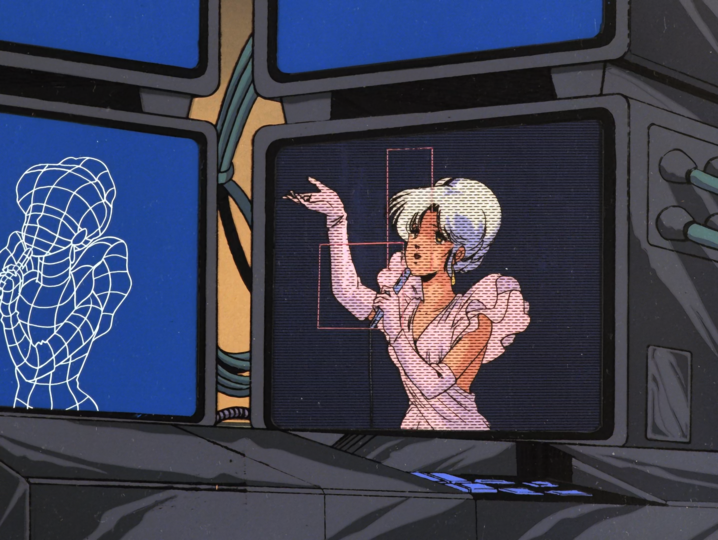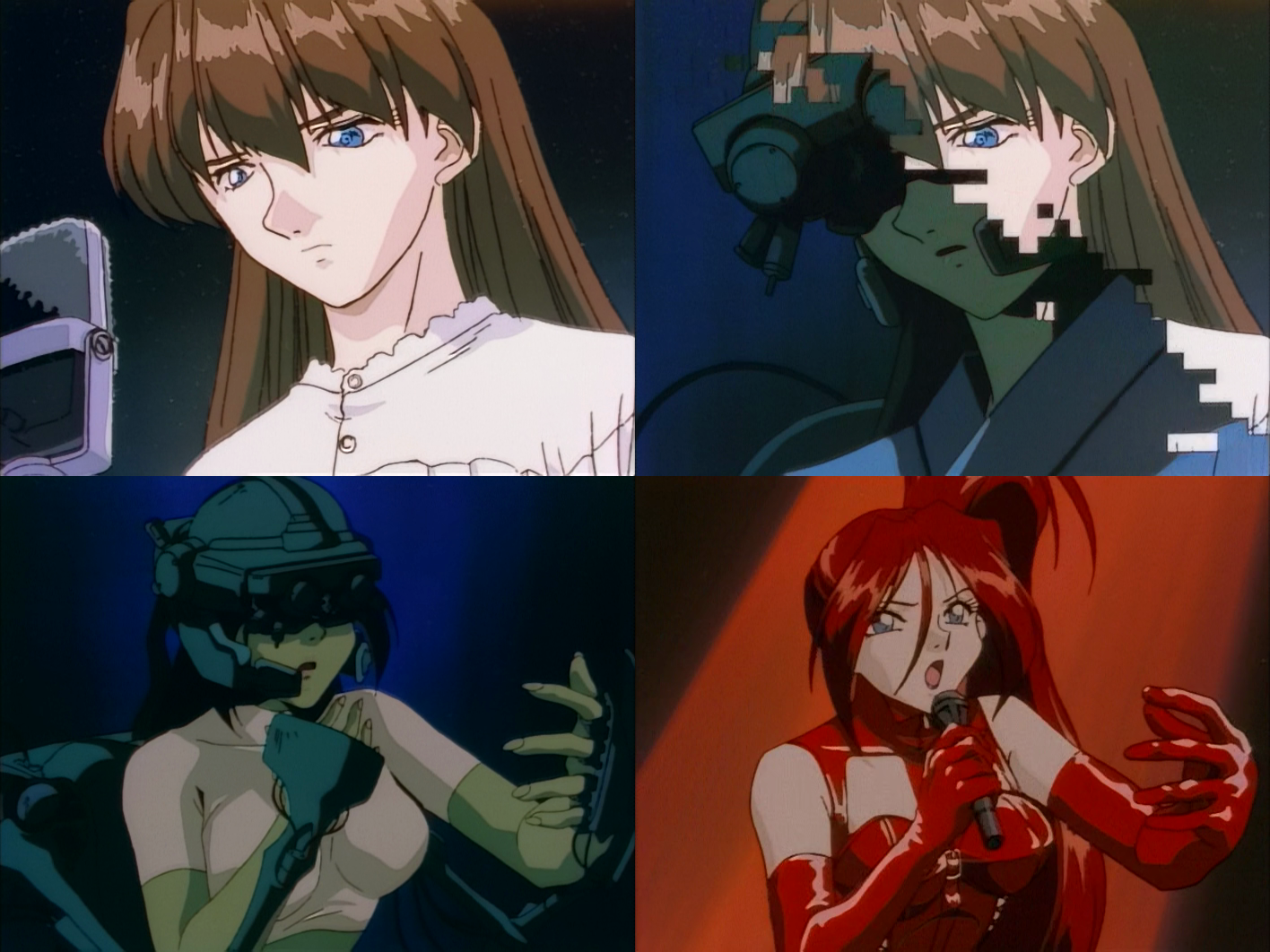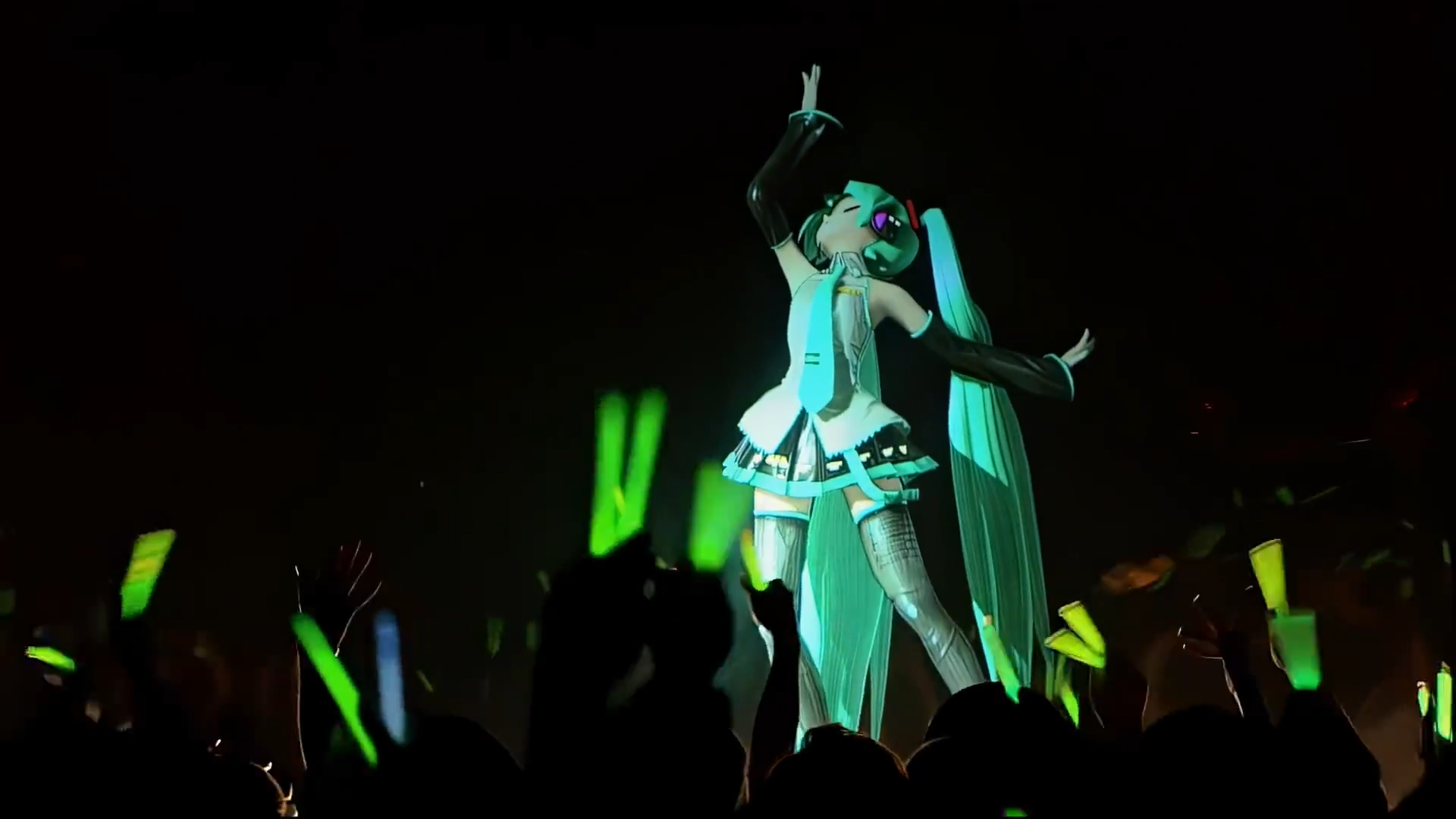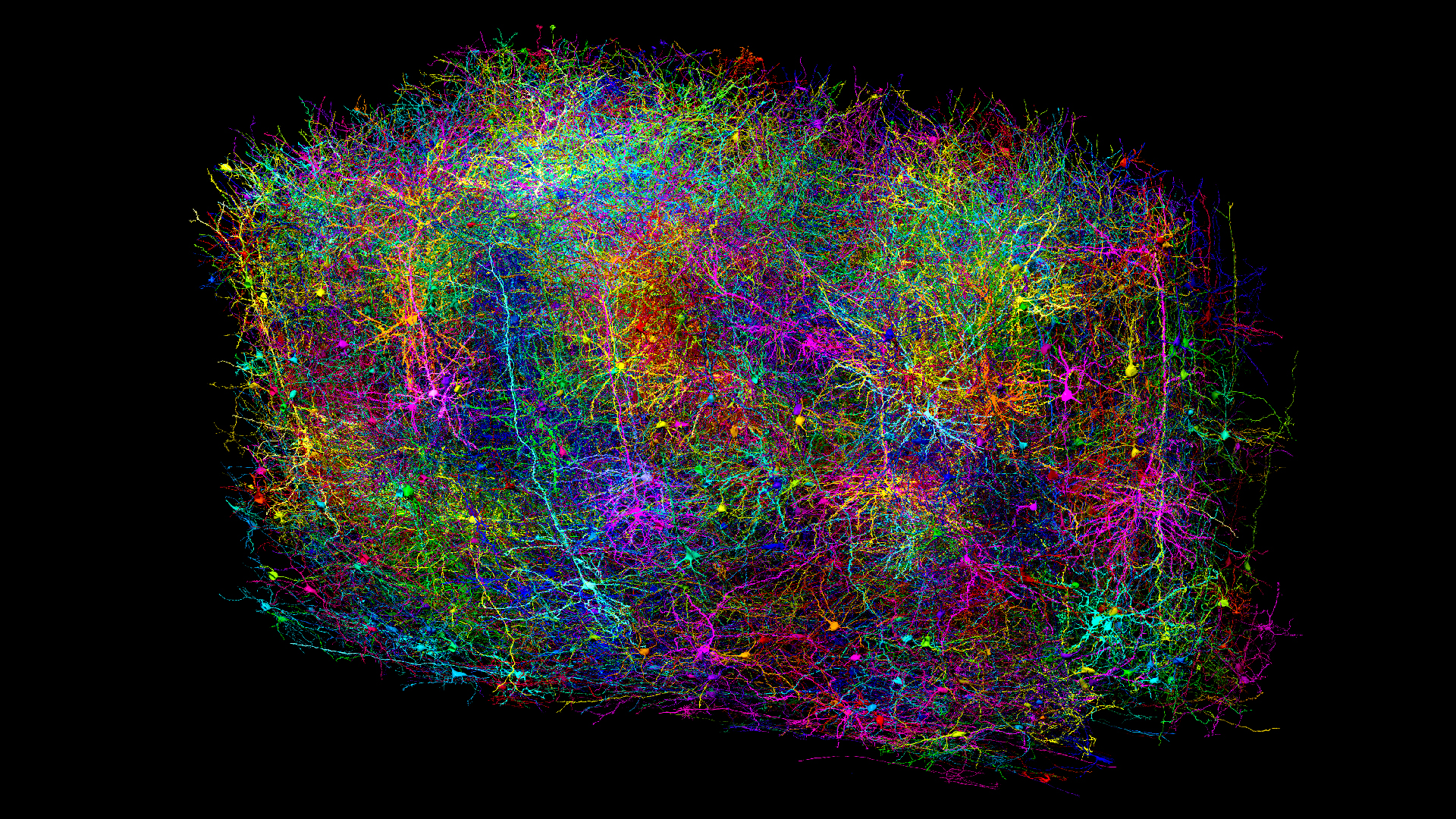Cyberpunk, Idols and Body Horror
The moment one chooses the track of fulfilling fans' fantasies and pleasing the audience, their character, personality, voice and even body will no longer be fully theirs.
 Cover image made by friend @Hugo373
Cover image made by friend @Hugo373
This article is intended to be consumed together with this video of mine:
Bilibili is the Chinese niconico or YouTube. No platform advertisements appended to all videos, but one will have a bad experience without an account. To begin with, a visitor not logged in will only be able to view with 360p resolution. Any wrong click on this iframe will lead you to the source.
A recent thought process of mine written into text becomes this article you are reading right now, and made into video becomes the above work.
Apex of Blue Type Idols: Tsukimura Temari
(The title is an iDOLM@STER franchise meme.)
On 2025/02/20, with the airing of episode 8 featuring Umiri of Ave Mujica, which had just taken a weird route of plot development, I noticed that among comment sections, some were mentioning "Tsukimura Temiri", a name weirdly familiar to me. Turns out, the two characters are both
- Bearing a cold appearance on the surface.
- But being airheaded and hilarious at the core.
- Having problems with weight control.
- Once being in a group that later disbanded.
- Still trying to get over with the past trauma.
- Being verbally mean to current partners.
thus people are memeing about the two. I was not an iDOLM@ASTERS player at that time, but I did have an iDOLM@ASTERs folder for collecting related funny videos I watched in the past. Turned out, the folder was already filled with Tsukimura Temari meme videos, and this brought me directly to Gakuen iDOLM@STER the mobile game, where Temari belongs.
It is a fun game. (comment sponsored by Bandai Namco Entertainment)
 Left: "A dream? No, that is an objective I'm definitely going to achieve."
Left: "A dream? No, that is an objective I'm definitely going to achieve."
Right: The score 730 is calculated by (13 + 15 + 15 + 15) * 1.5 * 8.38 = 729.06
A persisting game mechanism all the way from the first ever iDOLM@ASTER game is that, during the final live performance of the idol you are "producing", you can snap a picture at any time to keep as the "memory" of the current playthrough. But you can never pause or rewind the performance to retake pictures. I consider this a really smart mechanism to convey the core message "Idols are about the once-in-a-lifetime glitter on stage".
 The picture taken at True End.
The picture taken at True End.
Idols... what exactly are they?
(The title is again an iDOLM@ASTER meme, "アイドルって、何なんっすかね?" from THE iDOLM@ASTER SHINY COLORS.)
Although I am not an idol fanatic (really?), neither a Japanese voice actress fanatic (re@lly.), I have always been possessing general knowledge about the (east Asian) idol field. Anyone having a basic understanding of the Japanese media industry would know that many phenomenon and forms of works can be found roots in the evolution of the idol industry all the way from the 50s to current times. (Do you want to quickly cosplay as a weebery nerd who can make intriguing comments on almost any anime? I recommend Lectures on Subculture for Young Readers by Tsunehiro Uno. It is a really short book that will walk you through the evolution of idols I am referring to here.)
While I am going through classic anime works I indeed can observe that many idol-related ideas easily mistaken as products of the 21st century, actually stemmed from multiple decades ago.
Megazone 23 from 1985 depicts how the reality everyone lives in can be a pure fictional construct by the media, and how everyone continues blissfully ignorantly live in "late 20th century, the best time in human history". In the anime, an artificial intelligence named Eve is both the core of the whole construct and a popular idol figure in front of people living there, holding up the illusion of peace and prosperity by singing and dancing. Of course, most people do not know that she is not human.
 Computer modeling already existed at that time, but only 30 years later does technology reach a state where the first virtual idol Kizuna Ai can be made a reality.
Computer modeling already existed at that time, but only 30 years later does technology reach a state where the first virtual idol Kizuna Ai can be made a reality.
Key the Metal Idol from 1994 brought crazy prophecy as far as directly predicting the birth of virtual idols controlled by human actors in real-time, or to say, virtual youtubers, vtubers.
 Creators in the past did not foresee vision-based motion tracking solutions, but still, current most advanced solutions are indeed wearable-based.
Creators in the past did not foresee vision-based motion tracking solutions, but still, current most advanced solutions are indeed wearable-based.
Philosophically, this work touches on
- Audience and idol.
- Producer and idol.
- Humans and robots.
three pairs of relationships that are all, in essence, "creator-being" relationship.
Idols are not created. They naturally born out of the very moments of audience expectation. -- Episode 14
Sociologically, the work also depicts clashes of two fan group regulated by public opinion control, the attempts from idol studios to decouple human actors and virtual figures, and objectification and exploitation of human actors. One may both get impressed by the prophecy of the creators, and depressed by the fact that the exact same tragedy happened on the first virtual youtuber Kizuna Ai in our reality.
 In the anime the studio prepared 2 replacements for the original actor, while in our reality, Activ8 the company prepared 3.
In the anime the studio prepared 2 replacements for the original actor, while in our reality, Activ8 the company prepared 3.
Check this video and the comment section of this recording if you are curious about this Kizuna Ai incident I am referring to:
The East Asian Body Horror
A few days ago I just finished watching legendary director Satoshi Kon's debut work, Perfect Blue. This work from 1997 would perfectly fit into the "Body Horror" category, being a thriller around the topic of idols. With Kon's oddly genius visual creativity, the dissociation between how ex-idol Mima perceives herself and how her producer, long-term fans, the movie industry and the media expect from her is illustrated.
After further bumping into some dark fan videos about the first heroine of the iDOLM@ASTER franchise Haruka Amami,
everything started to come together in my mind: The stories of producing idols, whether in a fiction or in our reality, actually can be viewed as a form of body horror.
Body horror initially refers to works like Alien or The Thing, where the human bodies are corrupted to achieve horror effects. The horror comes from characters losing control of their own bodies, while the control and possession of one's own body are usually taken as granted. However, similarly for an idol, the moment they chooses the track of fulfilling fans' fantasies and pleasing the audience, their character, personality, voice and even body will no longer be fully theirs and in their control.
From another perspective, let's also talk about Cyberpunk the genre I personally really love: With the overflowing depiction of brain computer interfaces and body modifications, these works can also to some extent be classified as body horrors. Along the development of information technology and bio-mechanical-engineering, things from thoughts flowing in one's own mind to one's very body to think and live the life with, will be gradually replaced by standard parts from the industrial complex, going out of one's direct and exclusive control.
 There are probably few images better than this illustrating this topic I am writing about. Nudity is present, but no one would find this scene erotic.
There are probably few images better than this illustrating this topic I am writing about. Nudity is present, but no one would find this scene erotic.
When I was talking to my friend @Hugo373 about this, he immediately quoted @秘则为花, a famous culture critic among Chinese networks:
这种对身体本身的不信任感,在我看来,可以称为日本“身体恐怖”的特点。不同于《异形》《怪形》等影史经典“身体恐怖”作品,日本这类作品的特点在于,不需要身体遭受外部侵入和变异,主人公对自己的身体本身、对身体产生的欲望,就有一种强烈的陌生和疏离。 -- Source
Such mistrust towards body itself, in my opinion, characterizes the Japanese "body horror". Different from classic theater body horror like Alien or The Thing, the uniqueness about such Japanese works is that, even with the absence of externally introduced corruptions and mutations to the body, the fictional characters would still obtain a strong strangeness towards and dissociation with their own bodies and the desires their bodies yield.
This critic also directly replied to my thoughts above:
《蓝色恐怖》就是标准的body horror啊。赛博格体现的是工业对人体的入侵,人变成势大力沉的“效用人”“工业人”,偶像工业体现的则是商业和消费对人体的入侵,特别是医美行业的发展,让人类第一次能够以欲望塑造自己的“人形”——这个自镜中映出的、对自我意识最为关键的部分,像去年很火的body horror电影《某种物质》就是同一题材作品。其实,这篇回答我本来想写,同为body horror作品,《攻壳》实际上是和梦野的《脑髓地狱》、今敏的《蓝色恐怖》、小岛的《合金装备V》处在同一谱系中的,但后来觉得都展开讲太拉拉杂杂了,所以就只重点说了下《脑髓地狱》,用了个《合金装备V》的副标题“幻痛”
Perfect Blue is indeed a standard body horror. Cyberpunk reflects how the industrial world invades human body, where humans are transformed into highly augmented "utilitarian/industrial beings", while the idol industry reflects how the business and consumerism world invades the human body, especially with the advent of aesthetic medicine, where for the first time in history humans can, according to their own desires, to reshape their "figures": something reflected by the mirror and core to self consciousness. Body horror movie from last year The Substance is also in the same genre. Actually, for this article I initially wanted to write that, as body horror, Ghost in the Shell actually can be placed together with Dogra Magra by Yumeno Kyusaku, Perfect Blue by Satoshi Kon, and Metal Gear Solid V by Kojima. But later I thought maybe I would be taking too far a detour by mentioning all of these, thus I only placed an emphasis on Dogra Magra and stole the subtitle of Metal Gear Solid V: "The Phantom Pain".
All Being Said, I Still Cannot Deny the Glitter on Stage
Excessively talkative audience like us are sometimes disliked by another type of audience, frustrated at us trying to generate tons of analysis to every work we come across. "Just shut up and enjoy", an attitude I am also aware of.
When I am writing this and creating related content, a message in Patlabor 2: The Movie by Director Mamoru Oshii keeps haunting my mind: Even if one witnessed in person the true war supporting the peace of others, such fake peace enjoyed by the others and their happy lives are still hard to deny. Even with the dissection and objectification coming from Acitv8, Kizuna Ai on stage is still a cute "Supa AI", and the opening to her "grand funeral", her final live, will leave a forever mark in the memories of audience like me. Even if behind the scenes, idols are about blood and sweat and unimaginable mental pressure, them on stage are still artists shining with once-in-a-lifetime glitter.
Not to mention, our reality is not completely dark at all. From the vast and infinite Internet, "containers" that are by design without fixed and unique personality like Hatsune Miku emerged, becoming the number one princess of the world by the support from countless creators and audience connected by information technology. Multimedia projects like iDOLM@ASTER, LoveLive, BangDream also achieves positive dissociation between the characters audience fantasizes about and the human actors/creators behind the characters.
 Miku's Giving Day 2010
Miku's Giving Day 2010
*DIGITAL*
The final coincidence among the chain of coincidences that eventually led to the creation of this article and my video was that, I recently finished watching an introductory video on subgenres of disco music, where Digital Dissatisfaction included at 19:13 as a representative of "indie disco" is my favorite of all music in the video:
Magically, the vocal part even somehow resonates with the topic I want to write about here. I went and searched for comments from the author, and found out that he indeed created the whole album driven by thoughts of how technology and humanity interacts:
The virtual world has its own set of rules, a ‘system’ that dictates our feelings and behaviour in different ways. This album is about my personal experience, both celebrating and being critical of technology... What I try to do is create a balance between a synthetic almost robotic sound and human emotion... Like everyone, I have spent most of 2020 inside, in isolation. It made me wonder how technology was seen as a futuristic utopia back in the 80s. Especially its influence on art and music back then. Today almost everything is possible. It goes beyond imagination. The big question is, what do we do with it as humanity. My album System is a direct result from that thought process. -- Source
Driving the idol industry, media industry, Internet-enabled collective creation, and the birth of cyberpunk and idol fictions, is exactly the ever growing digital and information technology, advanced technology that tries to conceal the slow-to-change humanity and ghosts, waiting to be saved.
科技让人类更强大,跑得更快,看得更远,突破了进化的极限,然而即便如此日新月异的人为进化:人类的本性依然像一一个襁褓中的婴儿一样恒久滞留。那些人性的弱点没有因为科技的更迭而改变,那些人性的劣根性没有因为思维载体的变化而改变。“人性”这个飘荡的幽灵在种种事件之中作祟。无论如何,科技的更新都只能在表面上创造强大,而每个尖端的义体下,人人都躲藏着脆弱的,等待拯救的灵魂。
Technology makes humans stronger, run faster, see farther, beyond the limits of natural evolution... yet despite such advanced artificial evolution, humanity keeps stranding like an infant locked to the cradle. Weak points of humanity do not go away with the update of technology; The inherent flaws of humanity do not go away with the change of the hardware we generate thoughts with. "Humanity" is the persistent ghost lingering in all kinds of phenomenon. At the end of the day, development of technology only brings superficial strength. Underneath the cutting edge body modifications, lies the weak ghosts of humans, waiting to be saved. -- Comment on Ghost in the Shell series from unknown origin.
 1000 neurons and their connections from brain scan data from the MICrONS Project.
1000 neurons and their connections from brain scan data from the MICrONS Project.
 Internet in 2003, mapped by Opte Project.
Internet in 2003, mapped by Opte Project.
P.S. Dark Haruka
The history of Haruka Amami fan art is so interesting. It is a dialectical dynamics from "perfect empty container", to "containers must be filled", then finally to "the perfect emptiness itself is still unique". It is really hard for me to quickly go over this instance of "Internet enabled collective creation", but here is a perfect introductory video:
はるかっかー!